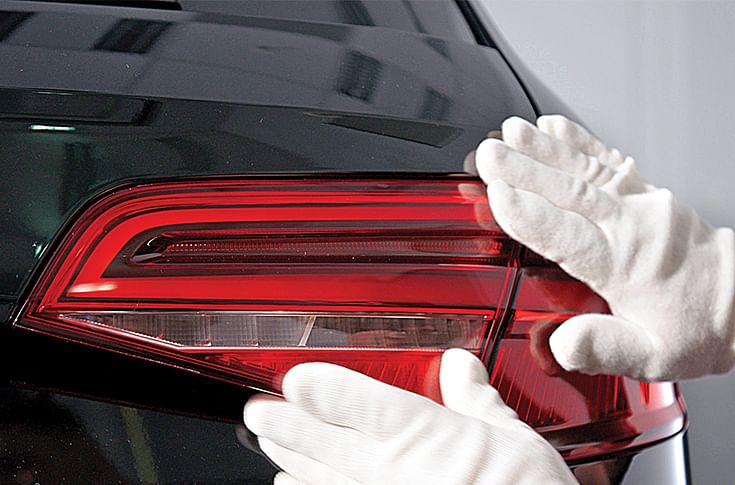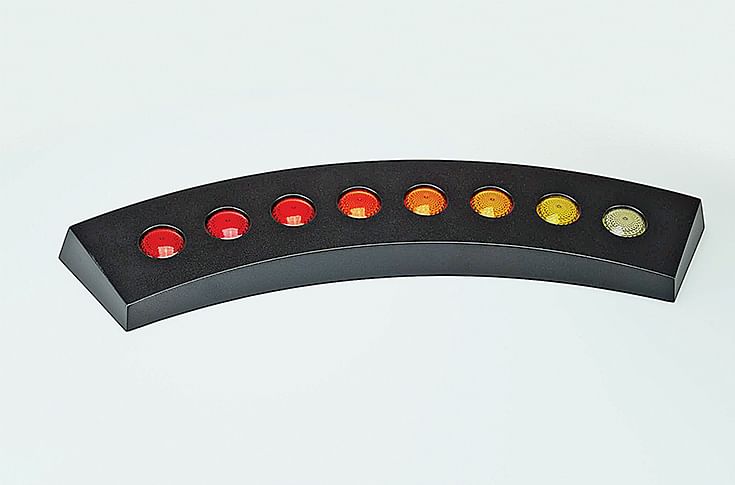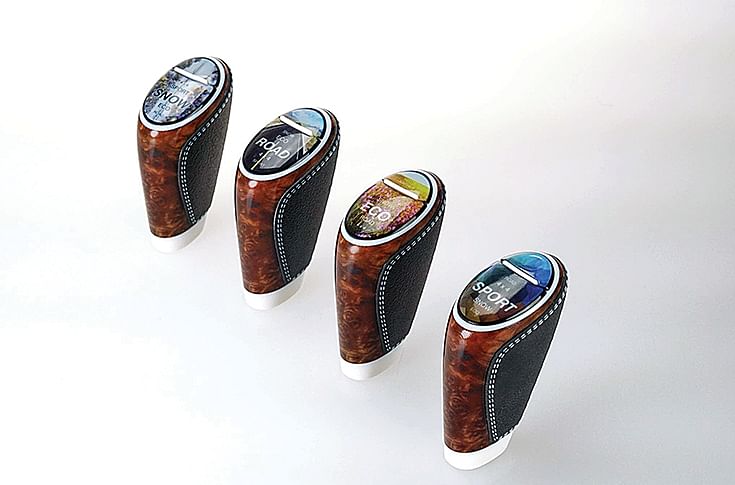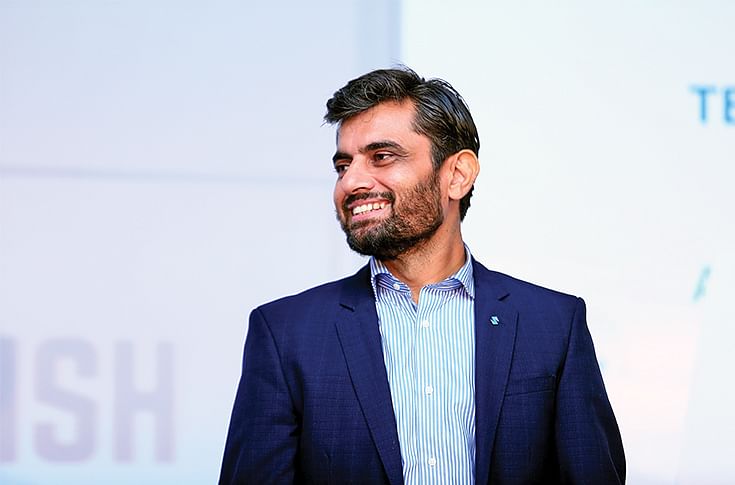Stratasys looks to transform India Auto Inc with 3D printing
Key 3D printing breakthroughs are helping vehicle makers and suppliers achieve speedier time to market and turn more competitive.
Bangalore-based Stratasys India, which is seeing growing acceptance of the technology, believes it can help industry go from the design studio to the factory floor in a fraction of the time it takes other development processes. Among the megatrends that have gripped the auto industry is that of 3D printing. For Stratasys, the global 3D printing company which sees automotive as a growth frontier, currently has the mobility sector contributing nearly 60 percent of its total India business from both OEMs and Tier 1 and 2 suppliers. Stratasys 3D printing products are used for rapid prototyping, tooling, jigs and fixtures, and production parts, both in the vehicle interior and exterior.
Initially operating in India as a liaison office for 18 years, Stratasys set up a wholly owned subsidiary in 2015 when it saw rapid growth and growth potential in the Indian auto industry. At present, it has up to two modern experience centres, one each in Bangalore and NCR, equipped with high-class production and 3D printing facilities. Of its diverse customer base in India which has grown to over 600 customers, automotive clientele comprise passenger car, two-wheeler and commercial vehicle OEMs as well as Tier 1 and 2 suppliers.
Speaking to Autocar Professional, Rajiv Bajaj, managing director, Stratasys India, said, “India is one of the largest and fastest growing automotive markets globally and we have participated well in this growth. We work with all the key OEMs, Tier 1 and Tier 2 suppliers, enabling them on additive manufacturing.”

Audi is among the global OEMs which are benefiting from Stratasys' 3D printing technologies.
As customers the world over turn more demanding, the auto industry is pushing for speedier time to market for new products and variants, eye-catching design and niche models too. As a result, OEMs are exploring different tools to help them tackle these complexities in as smooth a manner as possible.
“The new product development program cycle is falling rapidly from 36 months to nearly 18 months. It is not just the OEMs but suppliers too have to play an equal role in prototyping products speedily, compressing their product development phase. Also, the auto sector has seen a shift in trends where suppliers used to manufacture a product from an OEM’s design. This is not longer the case now; suppliers have to play an integral role in designing the component they make,” elaborates Bajaj.
Evolved technology
The past decade has seen significant advances in additive manufacturing 3D printing technologies. 3D printers have become necessary to manufacture newer, cleaner, lighter and safer products at lower costs and short lead times.
Globally, Stratasys has a strong foothold and is the official supplier of 3D printing solutions to the McLaren Honda Formula 1 team. McLaren uses Stratasys’ innovative FDM and Polyjet-based 3D printing solutions and cutting-edge materials for visual and functional prototyping, production, tooling including composite tooling and customised production parts. This accentuates the manufacturing operations as well as McLaren cars' performance and productivity.
Rajiv Bajaj: "It is not just OEMs but component suppliers too have to play an equal role in prototyping products speedily, compressing their product development phase."
Stratasys’ partnership with Audi, which has recently adopted full-colour Stratasys 3D printers, will use them to prototype tail-light covers. Traditionally, Audi used milling or moulding to produce individual coloured parts that had to be assembled as they couldn’t be produced in one piece, making it a time-intensive process. 3D printing has helped here.
With the advancement in machines, material and capabilities in terms of accuracies with a 3D printer, customers have begun using the technology beyond R&D centres. Premium car makers like BMW and Volvo today use the technology on the shopfloor; here Stratasys says it has multiple success stories of the technologies in terms of OEMs being able to compress their cycle times by 10-90 percent as compared to the traditional methods used earlier. In this process, customers have got benefits such as lighter parts, more ergonomic-friendly and easy to handle parts.

The second area of adoption for 3D printing is jigs, fixtures and tooling for the shopfloor. The third area and a rapidly developing one is the end-use parts which are called ‘production parts’ directly manufactured using 3D printing and put on vehicles running on the road. This is proving ideal for performance racing vehicle design and for producing a new variant in between races.
German conglomerate Siemens and Stratasys have partnered on a robotic 3D demonstrator, where they integrate Siemens Digital Factory solutions with Stratasys’ additive manufacturing solutions with a goal of incorporating additive manufacturing into the traditional manufacturing workflow.
“In advancements in material like carbon fibre and composites, and the capabilities that we offer, this become a super tool for automakers to think innovatively, and replace some parts with 3D printed components,” says Bajaj.
Demand growing gradually in India
Stratasys India says acceptance of 3D printing is growing in India, albeit slowly. While the company has not shared its customer list, some of the success stories include PV market leader Maruti Suzuki which has used its technologies in its popular Vitara Brezza SUV. Similarly, Hero MotoCorp has been an early adopter of 3D printing and Tier I supplier Elofic Industries has benefited in its product development too. By adopting 3D printing in its product development, CV major Ashok Leyland has drastically reduced prototype development time from 90 days to 52 hours to meet CMVR regulations.

“The big opportunity for 3D printing in the auto industry exists in design. The freedom of design capabilities that this technology offers is immense. It is very versatile technology and there are few areas where it is not being used,” says Bajaj.
Today, 3D printing is mostly used at the rapid prototyping stage but there is huge scope to expand it into other critical areas like jigs and fixtures and production parts. Stratasys says while global automakers have done just this, Indian industry is beginning to recognise the benefits. This presents a huge opportunity for Stratasys in India where the use till now has largely been in the prototyping area.

“We are an integral part of the product development process and are working with Indian OEMs on almost every new program which is going to be launched in the next 2-3 years. Also, in the upcoming BS VI migration, our technologies are complementary for companies to get their solutions right in the shortest possible manner,” says Bajaj.
3D products, typically manufactured in a few thousand, are useful for batch or sample production and won’t replace a million pieces churned out by injection moulding or by other processes. However, this helps in manufacturing products when the demand is for a speedy supply of customisable products/components, in a day or two, and shipped directly to the customer, who has a role in designing the part.
Currently, Stratasys India mostly works with its automotive clientele in interior and exterior parts, along with lighting products. “In India, we are present in shopfloor, prototyping and production parts. We foresee rapid growth in the near term and our focus remains on the automotive industry,” says Bajaj. The results are there to see because over the past three years, it has notched high double-digit growth. It is optimistic about even higher growth in the next 3-5 years as industry takes to 3D printing faster in a disruptive age.
(This article was first featured in the 1 August 2018 issue of Autocar Professional)
RELATED ARTICLES
How Venkat Thimaraju Bridged Mines and Machines for Daimler
From a young engineer's vision : Daimler India unleashes next-Gen trucks for India's booming construction and mining sec...
Tata Motors: From Ice Legacy To Electric Intelligence
Tata Motors has a lot riding on the newly launched Harrier EV, coming as it does on a fresh, EV-oriented software platfo...
Complete List of Cars and SUVs Tested by Bharat NCAP
Bharat NCAP has crash-tested 20 models to date, including both ICE-powered vehicles and EVs.





 24 Oct 2018
24 Oct 2018
 12491 Views
12491 Views






 Shahkar Abidi
Shahkar Abidi


 Ketan Thakkar
Ketan Thakkar


